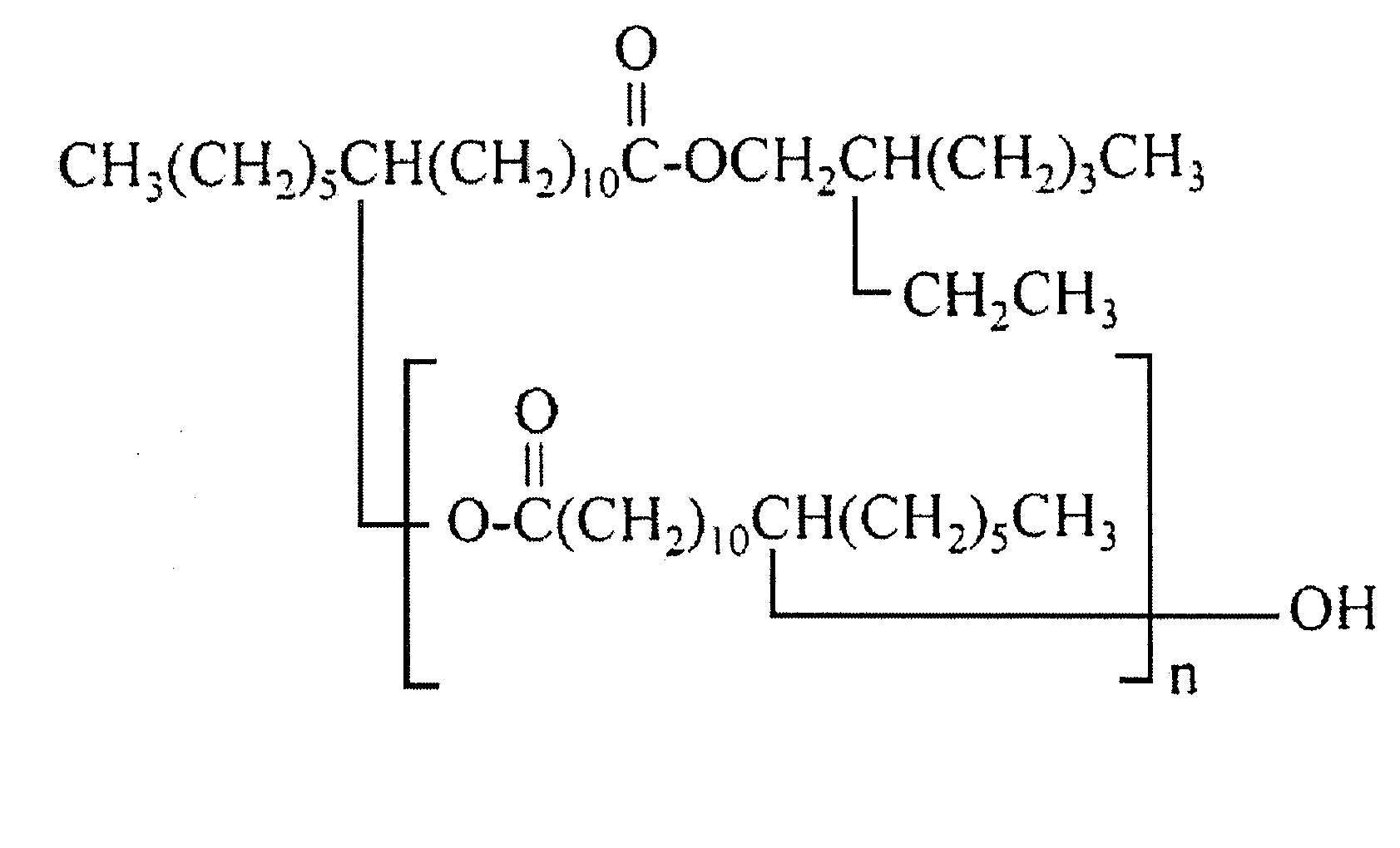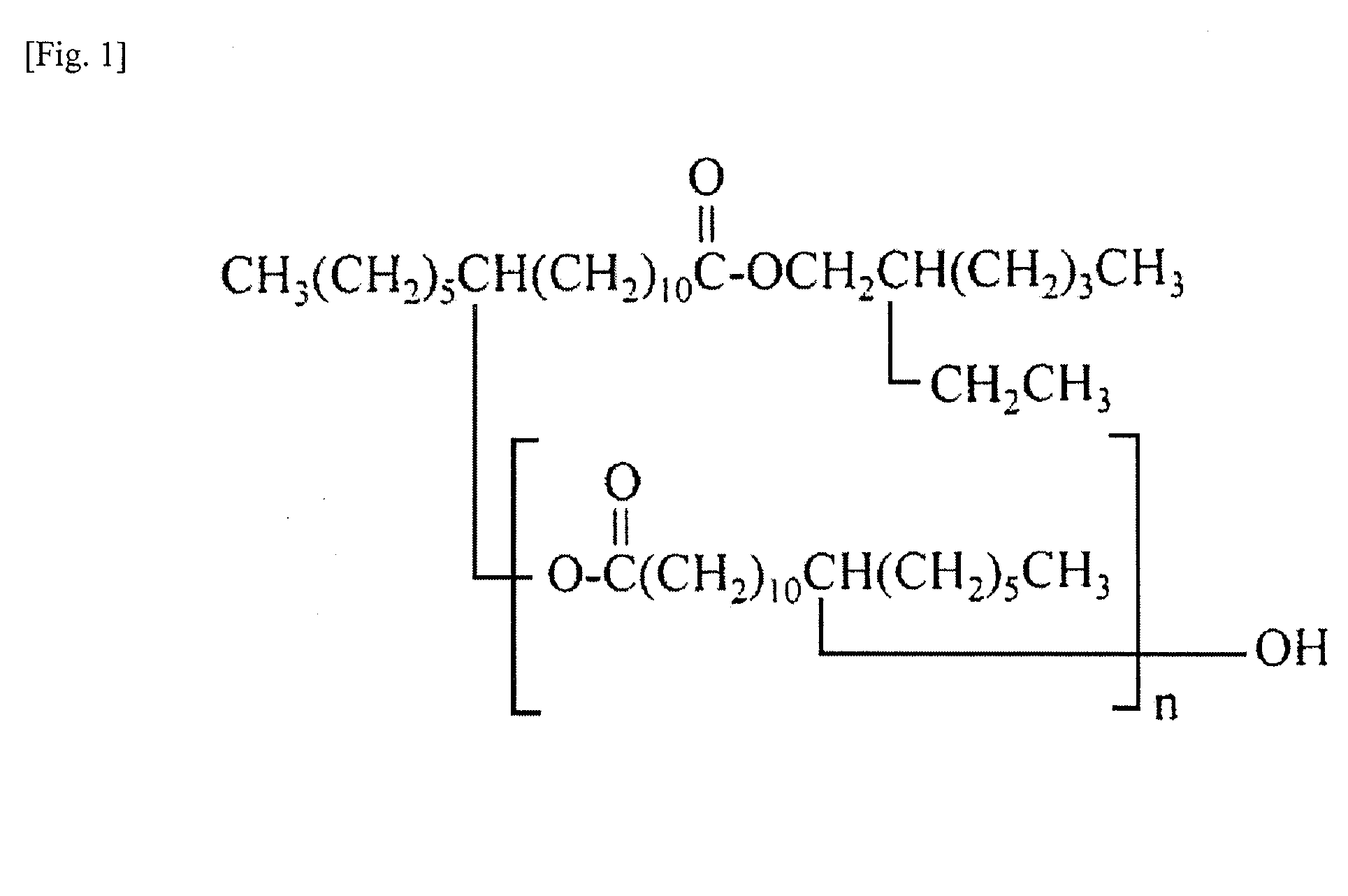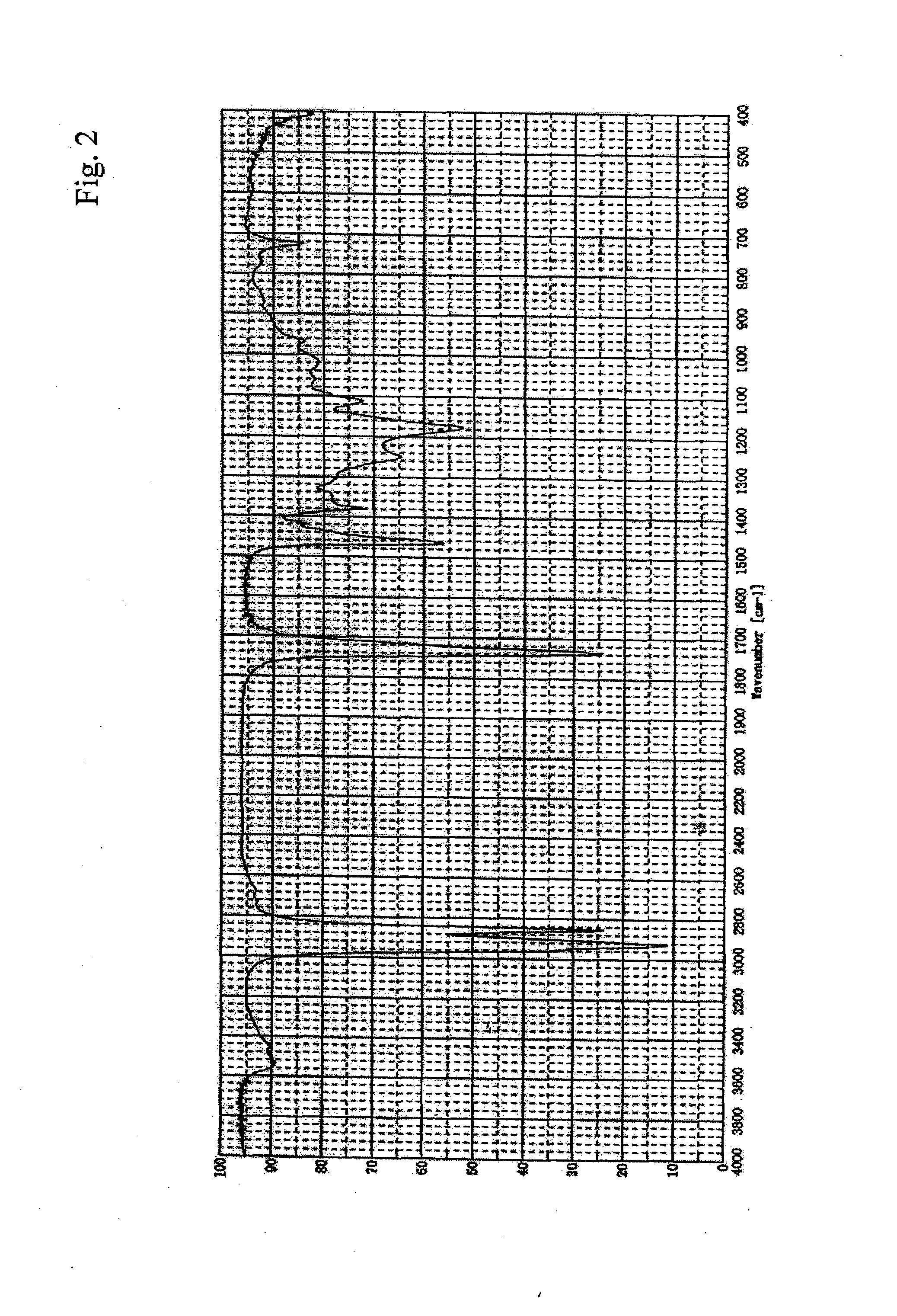Cosmetic material
a technology of uv absorbents and cosmetics, applied in the field of cosmetic materials, can solve the problems of no examples, dispersion problems, and its use in cosmetic materials, and achieve the effects of improving stability, stability, dissolution stability and compatibility with silicone oil of the aforementioned uv absorbents in a formulation, and excellent safety
- Summary
- Abstract
- Description
- Claims
- Application Information
AI Technical Summary
Benefits of technology
Problems solved by technology
Method used
Image
Examples
examples
[0114]Using diethyl amino hydroxy benzoyl hexyl benzoate as a component of poor solubility and crystallization / precipitation property, one of various types of oil solutions was mixed with diethyl amino hydroxy benzoyl hexyl benzoate being a dissolution stabilizer at a mass ratio of 1:1 and then the mixture was heated to 80° C., filled in a glass container and cooled to room temperature, after which the cooled mixture was placed in a thermostatic chamber adjusted to 5° C. and checked for precipitation of crystal after half a day, one day, one week, and six months.
[0115]The results are shown in Table 2.
[0116]Evaluation results accompanied by an x in Table 2 indicate that crystal had precipitated at the applicable point in time.
TABLE 2Evaluation resultsComponentSameFollowingNo.Component nameClassificationdayday1 week6 months1Octyl hydroxyl stearate oligomer (dimmer)◯2Octyl hydroxyl stearate oligomer (trimer)◯3Octyl hydroxyl stearate oligomer (tetramer)◯4Octyl hydroxyl stearate oligomer...
examples 1 to 6
[0121]Sunscreen products were produced based on the recipes shown in Table 3 and the manufacturing method specified.
[0122]In these examples, tested was combined use of octyl hydroxy stearate oligomer (dimer to heptamer) and diethyl amino hydroxy benzoyl hexyl benzoate being a component of poor solubility and crystallization / precipitation property.
[0123]The fields at the bottom show the results of daily observation over six months at 5° C. and room temperature.
[0124]Blended quantities are indicated in percent by mass (the same applies hereinafter).
TABLE 3No.Component nameExample 1Example 2Example 3Example 4Example 5Example 6Example 71Water9.849.849.849.849.849.849.842Xanthan gum0.020.020.020.020.020.020.0231,3-butylene glycol5.005.005.005.005.005.005.004Methyl para-oxy benzoate0.040.040.040.040.040.040.045Sorbitan isostearate0.600.600.600.600.600.600.606Sorbitan sesquioleate0.600.600.600.600.600.600.607Squalane1.601.601.601.601.601.601.608Olive oil1.601.601.601.601.601.601.609Behenic...
examples 8 to 13
[0131]Sunscreen products were produced based on the recipes shown in Table 4.
[0132]In these examples, tested was use of octyl hydroxy stearate oligomer (dimer to heptamer) as a dissolution stabilizer for diethyl amino hydroxy benzoyl hexyl benzoate, 4-tert-butyl-4′-methoxy dibenzoyl methane or other UV absorbent being a component of poor solubility and crystallization / precipitation property.
[0133]Numbers 17 to 20 shown in Table 4 were used as UV absorbents other than diethyl amino hydroxy benzoyl hexyl benzoate and 4-tert-butyl-4′-methoxy dibenzoyl methane.
[0134]The results of daily observation over six months at 5° C. and room temperature are shown below.
TABLE 4ExampleExampleExampleExampleNo.Component nameExample 8Example 9101112131Water9.849.849.849.849.849.842Xanthan gum0.020.020.020.020.020.0231,3-butylene glycol5.005.005.005.005.005.004Methyl para-oxy benzoate0.040.040.040.040.040.045Sorbitan isostearate0.600.600.600.600.600.606Sorbitan sesquioleate0.600.600.600.600.600.607Squa...
PUM
| Property | Measurement | Unit |
|---|---|---|
| wavelength | aaaaa | aaaaa |
| wavelength | aaaaa | aaaaa |
| wavelength | aaaaa | aaaaa |
Abstract
Description
Claims
Application Information
 Login to View More
Login to View More - R&D
- Intellectual Property
- Life Sciences
- Materials
- Tech Scout
- Unparalleled Data Quality
- Higher Quality Content
- 60% Fewer Hallucinations
Browse by: Latest US Patents, China's latest patents, Technical Efficacy Thesaurus, Application Domain, Technology Topic, Popular Technical Reports.
© 2025 PatSnap. All rights reserved.Legal|Privacy policy|Modern Slavery Act Transparency Statement|Sitemap|About US| Contact US: help@patsnap.com



